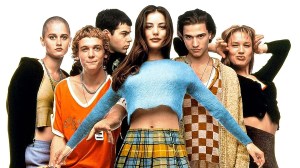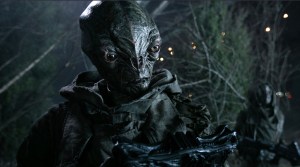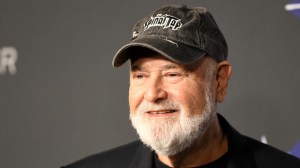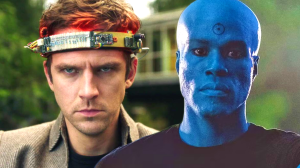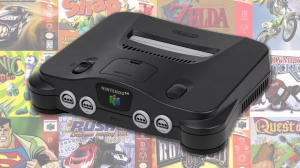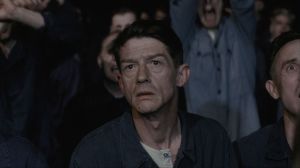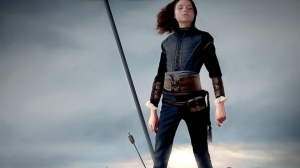Today saw the release of Deathstroke #11, a hard-hitting one-and-done story that deals with gun violence, gang violence, and racism in Chicago.
Videos by ComicBook.com
The issue, written by series writer Christopher Priest and drawn by his Steel collaborator from 20 years ago, Milestone Comics icon Denys Cowan, asks some hard questions and delivers only one cynical answer soaked in black humor — and it’s an early contender for one of the best single issues of 2017 (or, if you prefer, of DC’s Rebirth era).

A personal note to provide context to this piece, and then we can swing back into the editorial we, so to speak: I don’t care for Deathstroke.
As a character, I’ve always felt like his best days were behind him — that he was a great villain for The New Teen Titans but got overexposed, overused, and ultimately lost his edge, while spawning a generation of imitators who turned out to be at least as interested as he was (Deadpool, for instance).
Christopher Priest’s Deathstroke is a testament to the fact that a great writer with a solid take can deliver a brilliant comic no matter what character he’s writing.
“Part of my goal though was to reclaim ground — and I mean this with all due respect to writers who have come before me, but to reclaim some ground for Deathstroke that Deadpool had taken from him,” Priest told ComicBook.com back in July. “Because Deadpool is the echo of Deathstroke, not the other way around. And we don’t want Deathstroke to look like he’s some kind of a rip-off of Deadpool but Deadpool is huge now….So I definitely had a conscious goal to reassert Deathstroke as his own man, as his own character in a unique way. He’s not at all funny. There’s humor in the book but Deathstroke himself is not. He has no sense of humor, and it is nothing at all like Deadpool.”
So what makes us feel so confident that he’s accomplished that goal? And why should you even care?
Read on…and check back tomorrow for an interview with Priest and Cowan about “Chicago.”
HE’S A BASTARD
Remember: Deathstroke is a villain.
No matter how many times they give him humanizing characteristics, or put him up against worse villains, or give him a solo series and force him into the role of hero or antihero…Deathstroke is ultimately a villain.

One of the great things about the Priest series is that he’s been able to simply let Deathstroke be a villain and give reasons that reading a villain’s story is compelling.
“Deathstroke because Deathstroke is a killer. He doesn’t just knock you out and go, ‘I won that fight,’” Priest explained. “You have to be careful who you put in front of him because if Deathstroke doesn’t kill them, we’re violating the character. If Deathstroke is always getting his butt kicked, then we’re violating the character.”
We see this at work when, in the first issue of the book, he abandons his young sons in the woods to teach them a lesson. The dysfunctional relationship that he has with his kids has continued to color the series ever since.
THE HUMANITY OF THE BOOK
This book is full of humanity, and not in a preachy kind of way where the creative teams try to make you empathize with a monster by showing us what a monster he’s not, and not in a kind of pretentious way that makes you feel like Priest is trying to deconstruct superheroes and create a new Watchmen.

In the world of Deathstroke, things have weight. When events occur, it impacts the world around them. When Deathstroke does things, it impacts his kids. When an innocent kid gets shot during a mugging, there are consequences for that.
In this way, the book kind of carries on the Milestone feel, creating a fully-realized fictional world in which superheroes exist, but happy endings aren’t guaranteed — especially in the bad part of town (or the world).
THE WAY IT DOES BACKSTORY
Arrow could take a few notes from the way this book does backstory.

There’s flashbacks, there’s intrigue, there’s all kinds of stuff that isn’t necessarily a direct A to B narrative story, but it never feels like there’s an exposition dump going on or that the sequences not set in the present day are there just to service the needs of setting up one plot point that will pay off later.
The character beats in the past are on point, and this is the rare instance where it’s not annoying to revisit the early days of a character before he was completely what we know him as today.
THE ART
This book is gorgeous.

It’s a twice-monthly book, so it doesn’t have just the one art team…but everyone who’s come on board is doing their best work, and some of the names involved…
…seriously, who had “Christopher Priest, Denys Cowan, and Bill Sienkiewicz collaborate on Deathstroke in the office pool? Because I think the odds were something like 100-to-1 on that.
Other artists have included Cary Nord and Carlo Pagulayan — and that doesn’t even count talent like G.I. Joe icon Larry Hama chipping in to help script an issue…just because.
CHRISTOPHER PRIEST
All of this, though, flows from the fact that they have Christopher Priest doing this comic. And it’s wonderful.

Elements of his ultra-violent years blend with some of the creative elements he used to inject into the superhero comedy Quantum & Woody to create a book that feels like nothing else on the shelves — but feels every bit like a Christopher Priest book.
And that’s a good thing: Priest had been out of the game for years (except for a recent Quantum & Woody revival) and hadn’t worked for DC in a decade when they approached him for Deathstroke. And on a day when DC announced that the pre-Flashpoint Superman was coming back, a healthy chunk of the audience for DC’s first Rebirth livestream were as excited to hear “Christopher Priest’s Deathstroke” as anything else that was said.
Turns out, the enthusiasm was justified.

